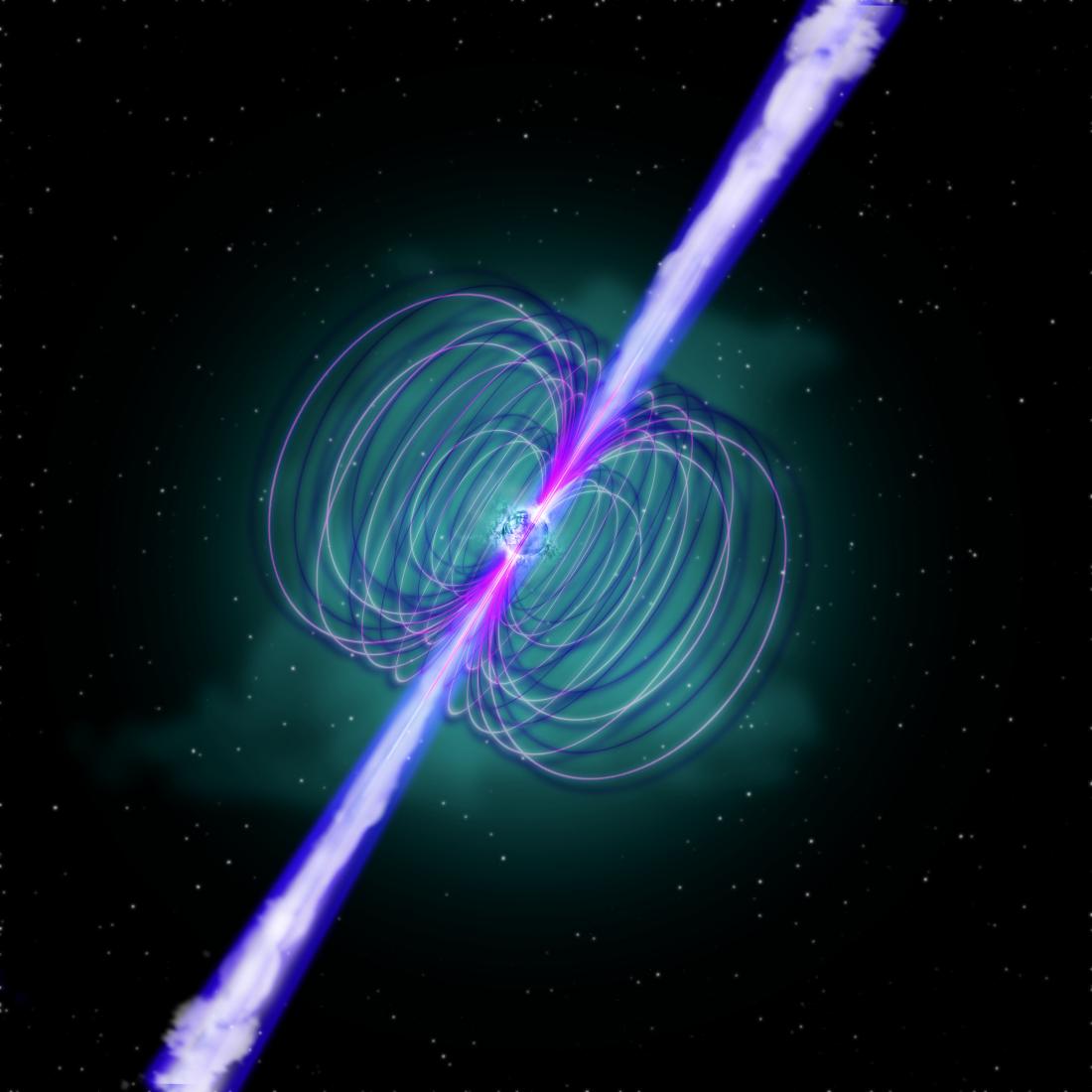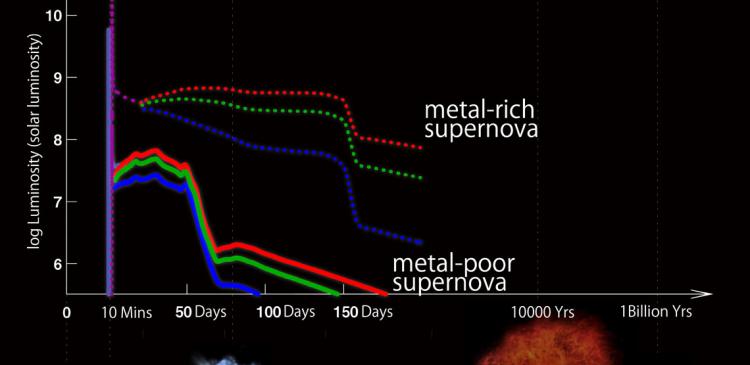The universe was dark and filled with hydrogen and helium for 100 million years following the Big Bang. Then, the first stars appeared, and metals were created by thermonuclear fusion reactions within stars.
These metals were spread around the galaxies by exploding stars or ‘supernovae’. Studying first-generation supernovae, which are more than 13 billion years old, provides a glimpse into what the universe might have looked like when the first stars, galaxies and supermassive black holes formed. But to-date, it has been difficult to distinguish a first-generation supernova from a later one.
New research, led by Alexey Tolstov from the Kavli Institute for the Physics and Mathematics of the Universe, has identified characteristic differences between these supernovae types after experimenting with supernovae models based on observations of extremely metal-poor stars.
Similar to all supernovae, the luminosity of metal-poor supernovae shows a characteristic rise to a peak brightness followed by a decline. The phenomenon starts when a star explodes with a bright flash, caused by a shock wave emerging from its surface after its core collapses. This is followed by a long ‘plateau’ phase of almost constant luminosity lasting several months, followed by a slow exponential decay.
The team calculated the light curves of metal-poor blue versus metal-rich red supergiant stars. The shock wave and plateau phases are shorter, bluer and fainter in metal-poor supernovae. The team concluded that the colour blue could be used as an indicator of a first-generation supernova. In the near future, new, large telescopes, such as the James Webb Space Telescope scheduled to be launched in 2018, will be able to detect the first explosions of stars and may be able to identify them using this method.
-------------------------------------------------------
Did you know?
Supernovae are so bright that their light can be seen as far as ten billion light years away. The last supernova seen in the Milky Way galaxy was in 1604. The metals dispersed by exploding supernovae go on to form new stars and planets. By studying supernovae, scientists have discovered that we live in an ever-rapidly expanding universe.
-----------------------------------------------------------
Further information
Alexey Tolstov
E-mail: [email protected]
Kavli Institute for the Physics and Mathematics of the Universe
The University of Tokyo




